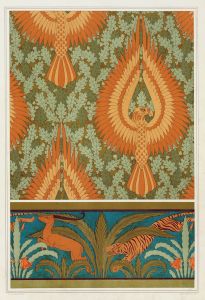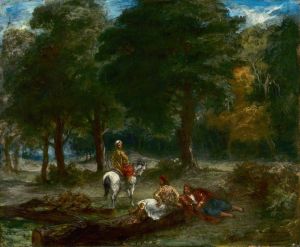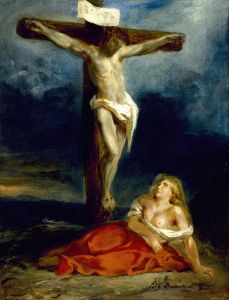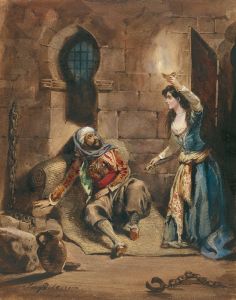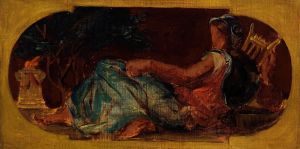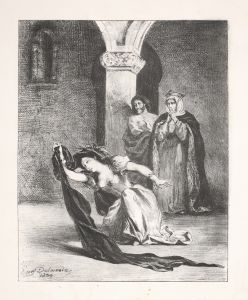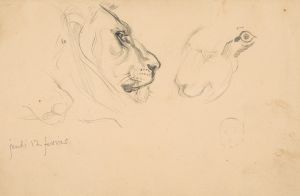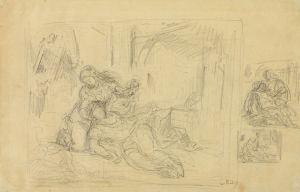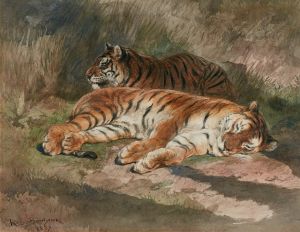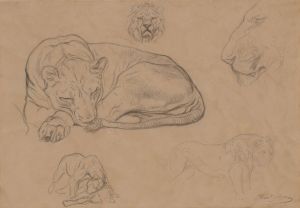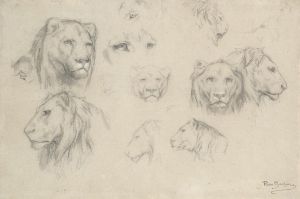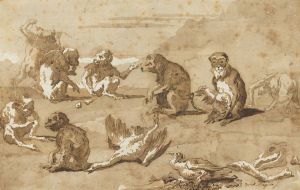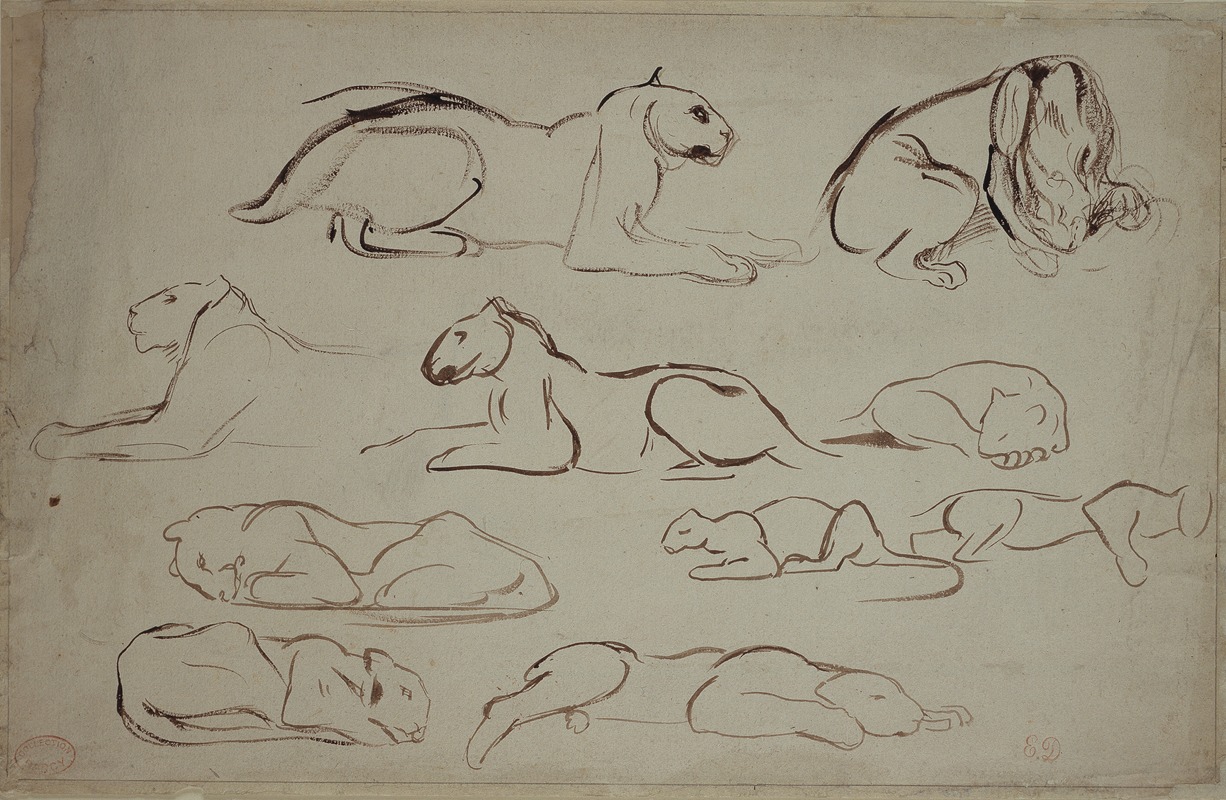
Studienblatt mit Löwen und Tigern
A hand-painted replica of Eugène Delacroix’s masterpiece Studienblatt mit Löwen und Tigern, meticulously crafted by professional artists to capture the true essence of the original. Each piece is created with museum-quality canvas and rare mineral pigments, carefully painted by experienced artists with delicate brushstrokes and rich, layered colors to perfectly recreate the texture of the original artwork. Unlike machine-printed reproductions, this hand-painted version brings the painting to life, infused with the artist’s emotions and skill in every stroke. Whether for personal collection or home decoration, it instantly elevates the artistic atmosphere of any space.
Eugène Delacroix, a prominent French Romantic artist, is renowned for his expressive brushwork and his fascination with exotic subjects. One of his lesser-known works, "Studienblatt mit Löwen und Tigern" (Study Sheet with Lions and Tigers), exemplifies his interest in the animal kingdom and his skill in capturing the dynamism and power of wild animals.
Delacroix was born on April 26, 1798, in Charenton-Saint-Maurice, Île-de-France, and became a leading figure in the Romantic movement. His works often depicted dramatic and exotic subjects, influenced by his travels and his admiration for the works of earlier masters such as Peter Paul Rubens. Delacroix's fascination with animals, particularly big cats, is evident in several of his works, where he explores their form, movement, and the raw energy they embody.
"Studienblatt mit Löwen und Tigern" is a study sheet, a type of artwork that artists use to practice and refine their skills in depicting specific subjects. This particular study sheet features sketches of lions and tigers, showcasing Delacroix's keen observation and understanding of these majestic creatures. The work is characterized by its loose, fluid lines and the dynamic poses of the animals, capturing their grace and power.
Delacroix's interest in animals was partly inspired by his visits to the Jardin des Plantes in Paris, where he could observe exotic animals firsthand. These visits provided him with the opportunity to study the anatomy and behavior of animals, which he translated into his art with remarkable accuracy and vitality. His sketches and studies of animals were not merely academic exercises but were infused with the same passion and intensity that marked his larger, more finished works.
The study sheet likely served as a preparatory work for more elaborate compositions, allowing Delacroix to experiment with different poses and compositions. Such studies were crucial for artists of his time, as they provided a foundation for more complex works and helped artists develop their skills in rendering anatomy and movement.
Delacroix's ability to convey the essence of his subjects, whether human or animal, is a testament to his skill as an artist. His works often evoke a sense of drama and emotion, drawing the viewer into the scene. In "Studienblatt mit Löwen und Tigern," the viewer can sense the latent power and grace of the animals, even in the simplicity of a study sheet.
The Romantic movement, of which Delacroix was a central figure, emphasized emotion, individualism, and the sublime aspects of nature. Delacroix's animal studies fit well within this context, as they reflect a fascination with the untamed and the exotic. His ability to capture the spirit of his subjects contributed to his reputation as one of the most important artists of his time.
While "Studienblatt mit Löwen und Tigern" may not be as widely recognized as some of Delacroix's larger works, it remains an important piece that highlights his skill and interest in the natural world. Through his studies, Delacroix not only honed his artistic abilities but also contributed to the broader appreciation of the beauty and complexity of the animal kingdom in art.





